When designing deciduous bonsai, one of the biggest decisions is how to form the branches.
Some of the key considerations are the angle at which the branches emerge from the trunk (do they go up, down, or out), the basic movement (curvy or straight), and the silhouette or outline (pointy or round) of the tree.
Here are five pairs of deciduous bonsai on display at this year’s Kokufu exhibit that provide examples of how these decisions can play out over time.
The first two trees are Korean hornbeams. The first has a rounded apex, and the second has a pointy silhouette. The branches on the first tree (the twin-trunk) are curvy and quickly divide into smaller branches, whereas the branches on the second tree are heavy, relatively straight, and extend before dividing into smaller branches.
These different branch structures create very different effects. Do you have a favorite approach?
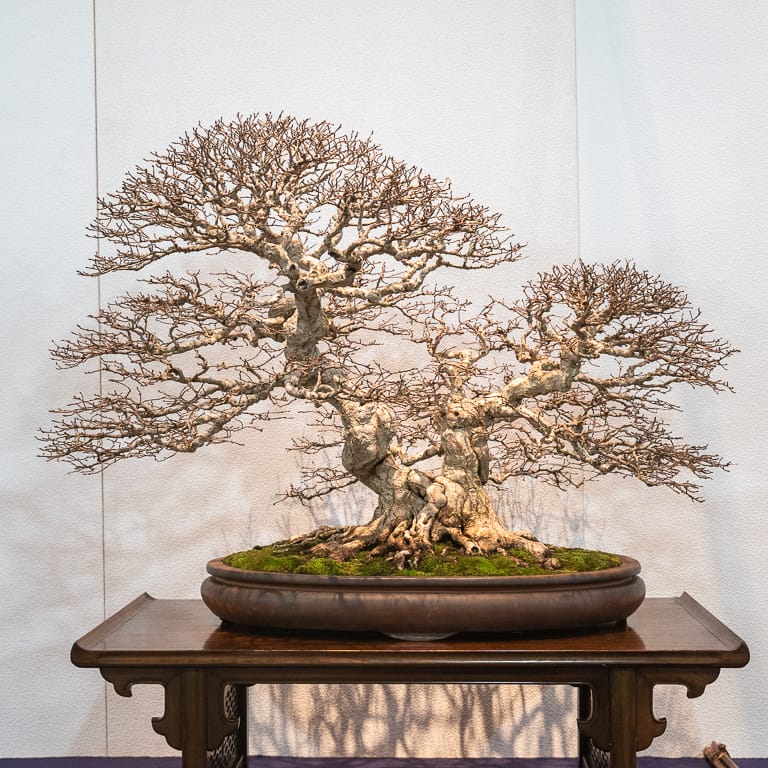
Twin-trunk Korean hornbeam
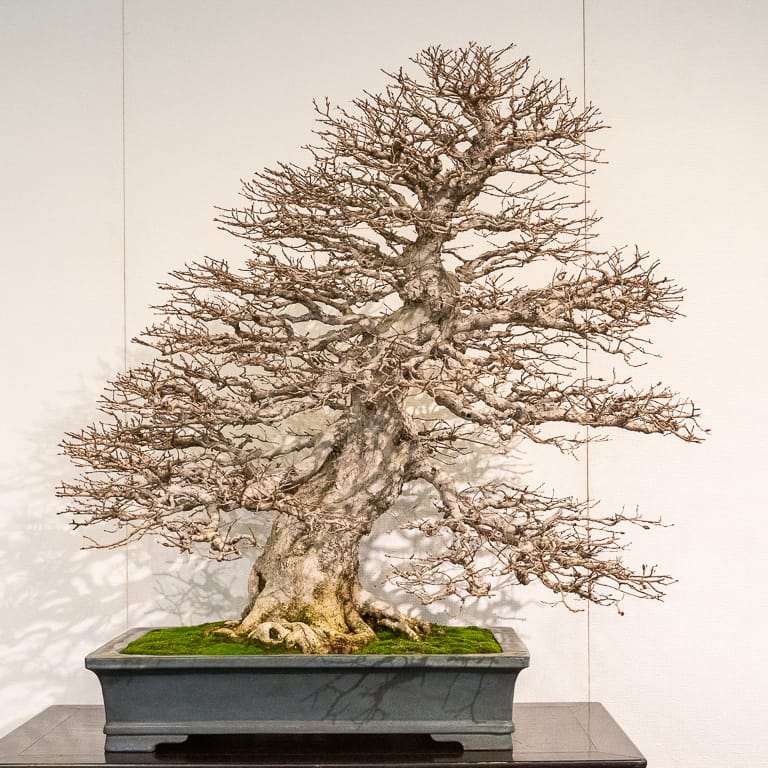
Korean hornbeam
The next two trees are Chinese quince. The first is a clump-style tree with branches that grow up and out away from the main trunks. The second has a single massive trunk, with massive, horizontal primary branches. Only the smaller branches on this tree grow upward.
Instead of focusing on which approach is my favorite, I’ll often look at trees like these and think about which approach is best given the shape and character of the trunk. Slender, curvy branches make sense on trees with slender, curvy trunks, but very different branch structures might be best for trees with massive trunks.
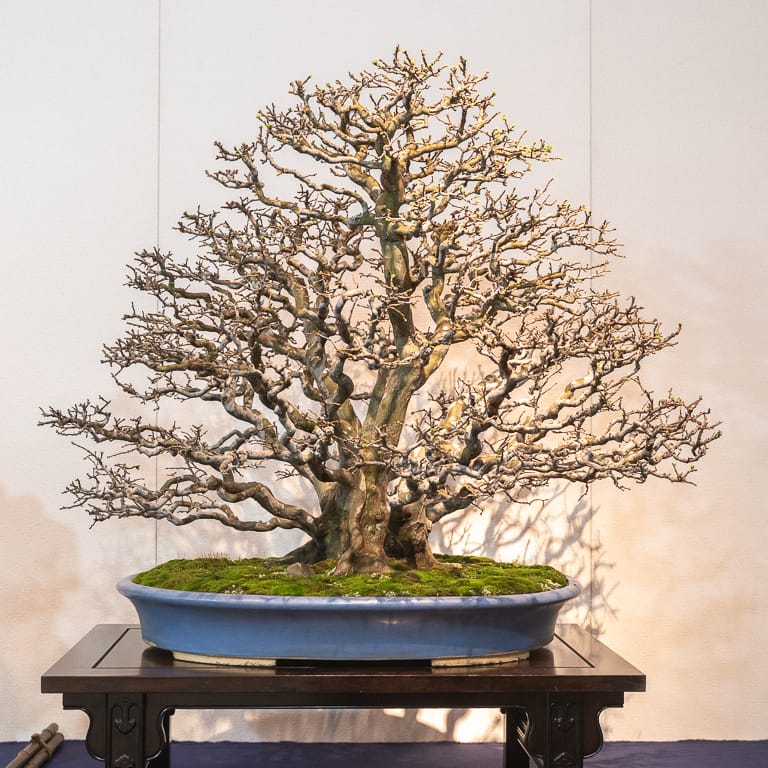
Chinese quince
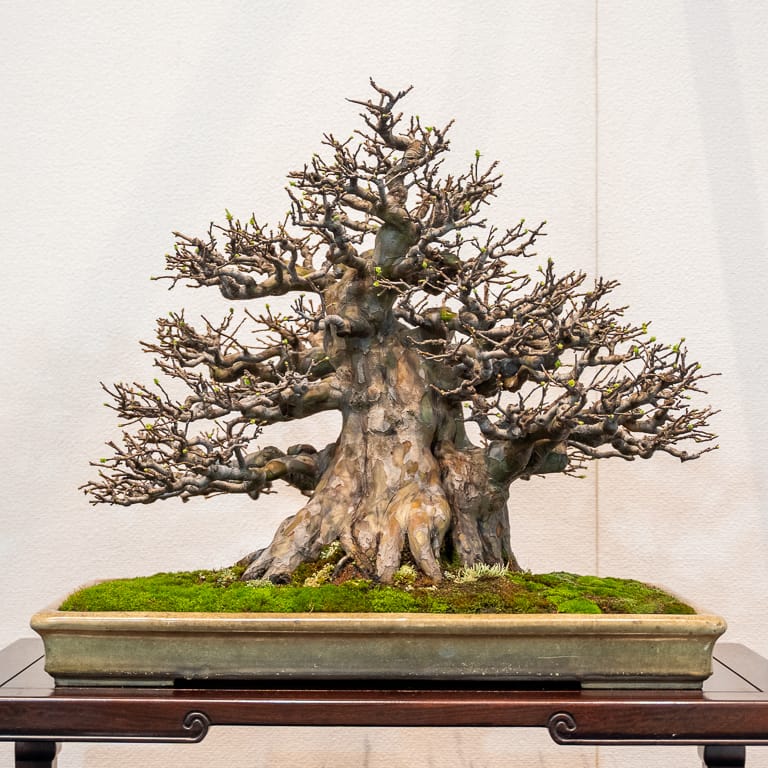
Chinese quince
Here’s are some more subtle differences. The two trident maples below, a root-over-rock tree and a clump-style bonsai, are both awesome specimens with incredible branch density. What’s different?
The silhouette on the root-over-rock tree is pointy whereas the outline is rounded on the clump-style tree. This is understandable given the shape of the trunk and primary branches. A single trunk that extends upward is more likely to result in a pointy shape than a tree with multiple trunks that extend outward.
The second difference is the angle of the primary branches. The branches are relatively horizontal on the root-over-rock specimen whereas the branches, particularly in the upper half of the clump-style tree, extend upward and outward.
If the branches don’t extend outward on a tree with a single trunk, the silhouette would remain narrow. By training branches that primarily grow outward on the root-over-rock specimen, the designer created a silhouette that does a good complementing the trunk and the relatively wide base formed by the root-covered stone.
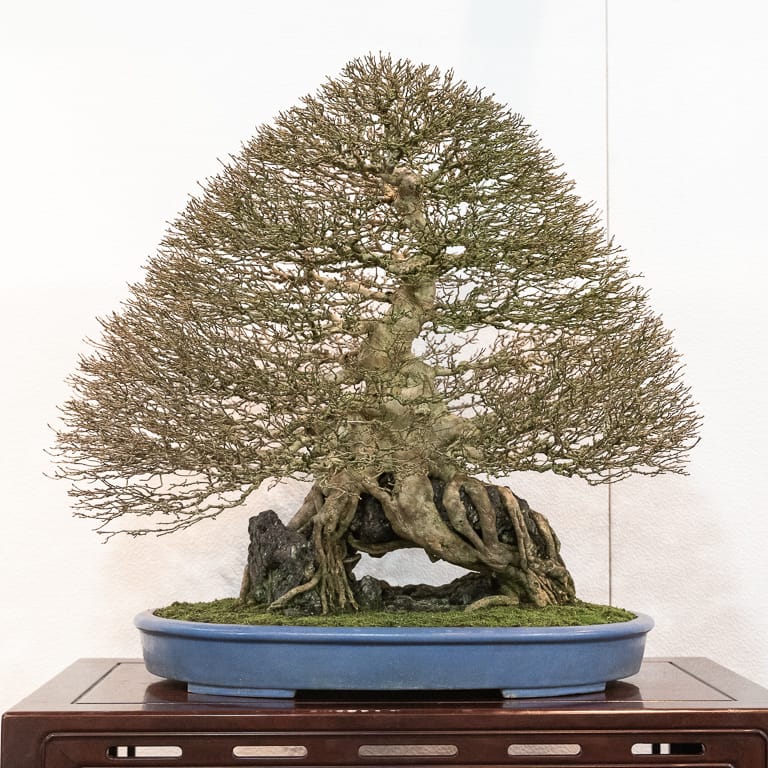
Root over rock trident maple
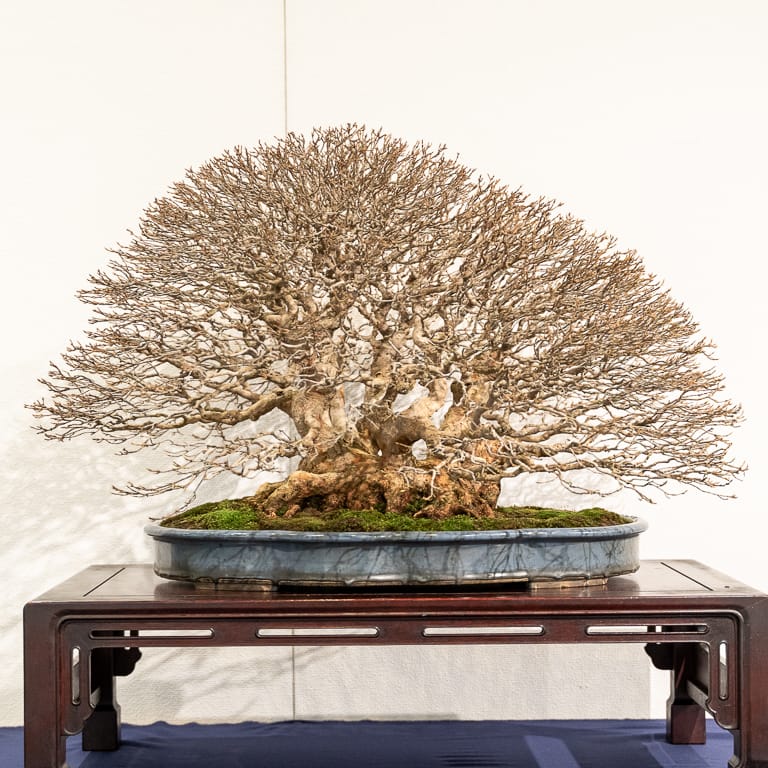
Clump-style trident maple
The next two trident maples offer a clear example of horizontal branches versus branches that grow upward and out.
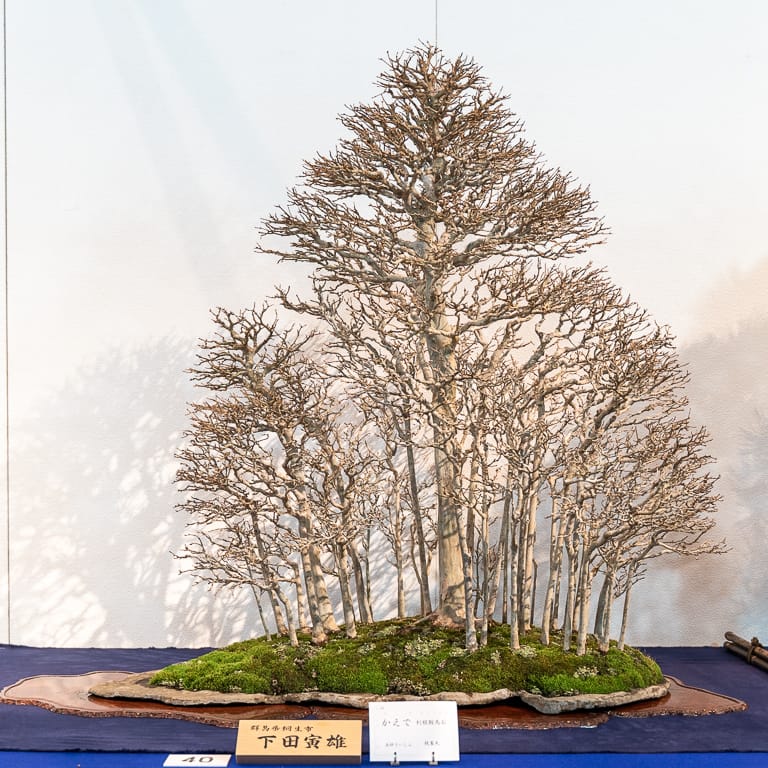
Trident maple forest – the branches grow upward and out
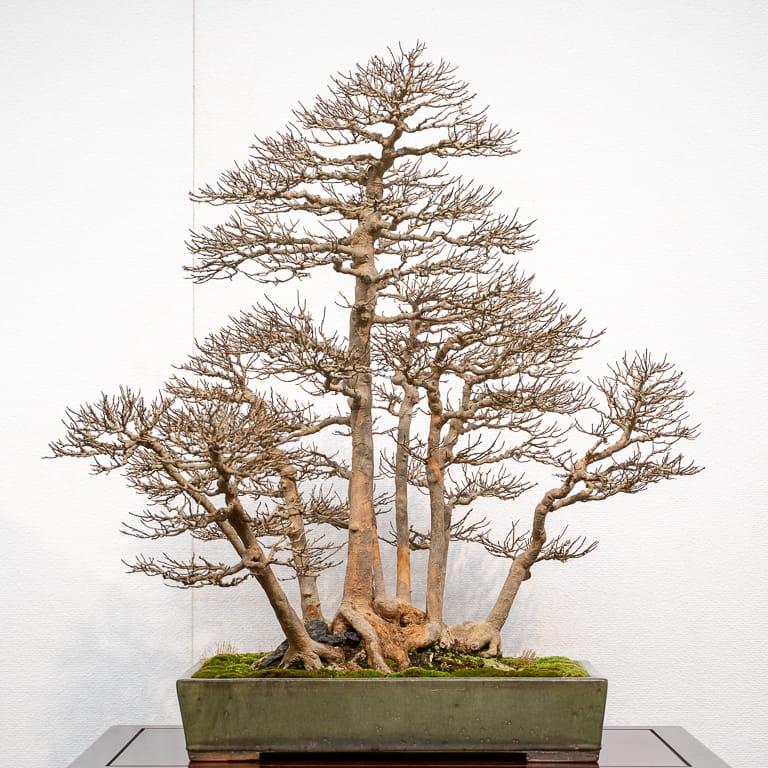
Trident maple with horizontal branches
I included the next two trees less to demonstrate an approach than to share well-designed bonsai that take very different approaches.
The pyracantha has a single trunk, somewhat horizontal branching, and incredible density. The lindera has slender trunks with slender branches that suggest the species’ natural clumping and shrub-like character. Each is awesome in its own way.
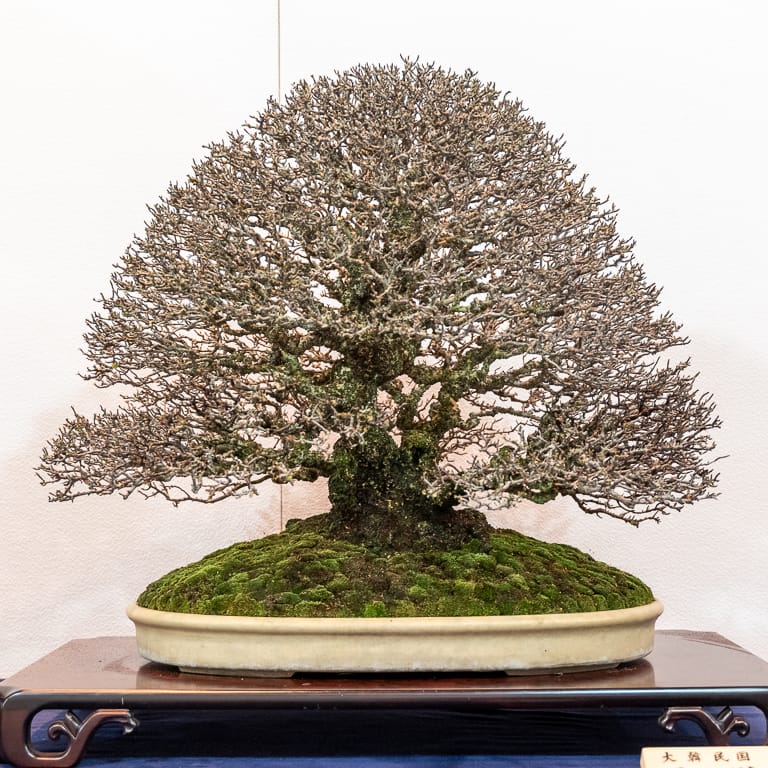
Pyracantha
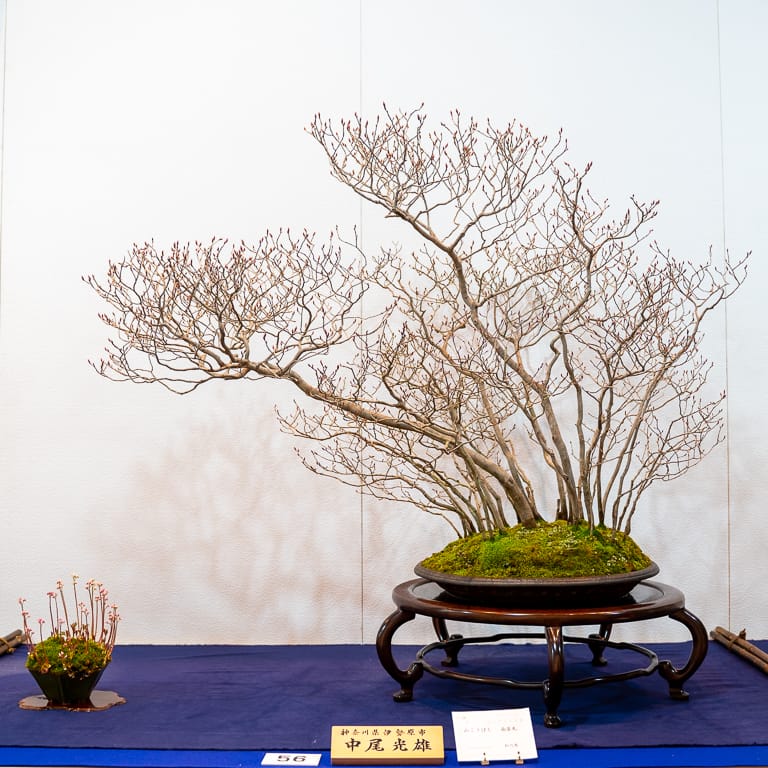
Lindera angustifolia (Oriental spicebush)
Next up: more Kokufu 101!
Subscribe to Bonsai Tonight
New Posts Delivered Every Tuesday and Friday
GARY says
WOW!!! Those are some dense trees!
Esperanza says
Thans you for your comments. It’s really interesting.
Jonas Dupuich says
Thanks, Esperanza!
Jonas Dupuich says
Incredibly dense – thanks, Gary!
Jaume says
Very interesting and educational analysis.
Thank you very much.
Jonas Dupuich says
Thanks, Jaume!
Gabe says
Great post, Jonas. Did you have a chance to count the “branch splits” on that root over rock trident? 10x ramified, 12x ramified.? It’s about as dense as I’ve seen..
Jonas Dupuich says
Thanks Gabe – I hadn’t thought of it like that! I zoomed in on the original photo and it looks like some branches may split up to 10-12 times. That’s a lot of pinching!
Gabe says
Absolutely amazing. Defoliating one of those probably takes half a day..
Jonas Dupuich says
Ha, half a day sounds about right! Thanks, Gabe.
Keith Jarvis says
Jonas, great job pointing this out – and in refraining from sharing your opinion. If I were to overgeneralize, I might say ‘up and outward’ is how many (most?) deciduous species grow in the wild, and ‘horizontal’ is how many bonsai artists grow deciduous species to mimic pine bonsai.
Each can be very impressive when done well. Which do you prefer?
Thanks again for sharing amazing trees with us.
Jonas Dupuich says
Thanks Keith – and good job posing the million dollar question! Yes, we’re far more likely to see up and outward growing branch patterns in nature, but as bonsai is a cultural practice and not simply an exercise in miniaturization, I think there is a place for “bonsai style” trees. As for when the bonsai style/horizontal branch approach is a good fit for a tree, I think it depends on the shape and character of the trunk. I like the up and out approach for trees with trunks that have gentle movement and subtle taper. The more horizontal (and hopefully it’s never truly horizontal) approach can look great on trees with massive trunks and dramatic taper.
Maybe you can help with a question I think about a lot – how to design trees with dramatic taper to evoke a sense of how the species grows in nature. Feel free to let me know if you have any ideas!